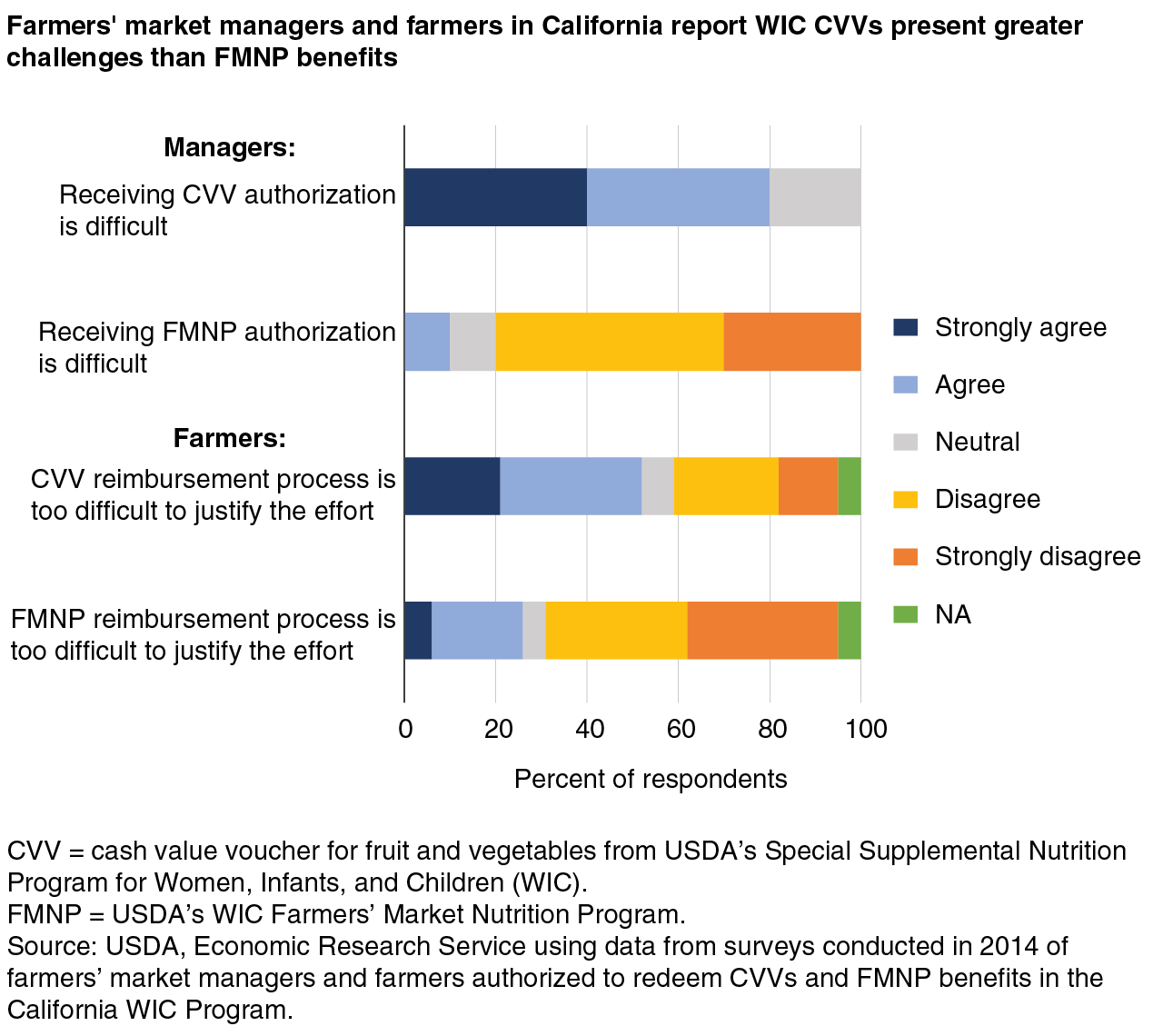Redeeming WIC Benefits at California Farmers’ Markets
- by Patrick W. McLaughlin
- 7/3/2017
Participants in USDA’s Special Supplemental Nutrition Program for Women, Infants, and Children (WIC) can redeem two types of WIC benefits at farmers’ markets for fruits and vegetables. The WIC Farmers’ Market Nutrition Program (FMNP) provides eligible WIC participants in participating State agencies with benefits valued between $10-30 per year to be spent exclusively at farmers’ markets. In addition, WIC participants receive paper cash value vouchers (CVVs) and/or electronic cash value benefits (CVBs). These CVV/Bs can be used to purchase fruit and vegetables at stores authorized to accept WIC benefits, and 28 WIC State agencies allow CVVs to be used at authorized farmers’ markets. As of summer 2017, CVV/B values are $11 per month for pregnant, postpartum, and breastfeeding women and $8 per month for children.
The vast majority of CVVs are redeemed at stores, not farmers’ markets. In California—the largest State WIC program in the Nation—participants redeemed $73,000 of the $87.6 million worth of CVV benefits at local farmers’ markets in 2014. To identify barriers impeding CVV redemption at farmers’ markets in California, researchers analyzed CVV redemption data for the State from June 2014 to February 2015. The researchers also conducted surveys of managers and farmers at 20 of the 36 farmers’ markets in California authorized to redeem CVVs during this period. The 20 surveyed markets accepted both CVVs and FMNP benefits. California farmers’ market managers and farmers both reported that CVVs present more challenges than the benefits issued through FMNP.
Eighty percent of farmers’ market managers surveyed agreed or strongly agreed with the statement that obtaining authorization from the California WIC State agency to accept CVVs is difficult compared with only 10 percent saying the same about the FMNP. Similar sentiments prevailed among farmers regarding the relative difficulty of receiving reimbursement from the State agency for CVVs. The relative dissatisfaction appears to stem from higher relative administrative burden, such as greater training requirements for the CVV authorization, complex reimbursement processes, and tighter windows for voucher redemptions.
When California WIC participants patronized farmers’ markets, they redeemed higher proportions of the value of their CVVs than at stores: the researchers found that the chance of a participant redeeming a CVV for the full value in California is nearly 100 percent at a farmers’ market compared with 66.8 to 85.6 percent at grocery stores of different sizes and formats. Adding fruit and vegetables to a purchase during checkout to reach the full CVV value may be more easily done at farmers’ markets potentially explaining the larger share of the CVV value that was redeemed at farmers’ markets.
This article is drawn from:
- “Women, Infants and Children (WIC) Program Redemptions at California Farmers’ Markets: Making the Program Work for Farmers and Participants,” by Tina L. Saitone and Patrick W. McLaughlin. (2017). Renewable Agriculture and Food Systems.


